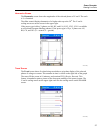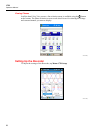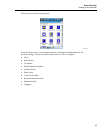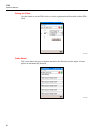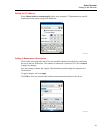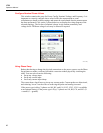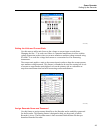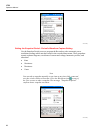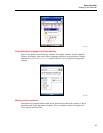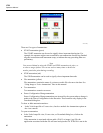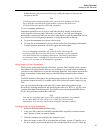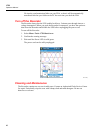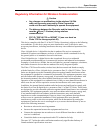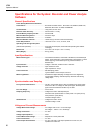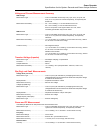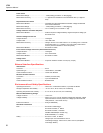
Power Recorder
Regulatory Information for Wireless Communication
49
Regulatory Information for Wireless Communication
W Caution
• Any changes or modifications to the wireless 2.4 GHz
radio not expressly approved by Fluke Corporation
could void the user's authority to operate the equipment.
• The distance between the Recorder and the human body
must be ≥20 cm (7.9 inches) during wireless
communication.
• FCC ID: T68FLK1750 or QOQWT 11 (see rear decal on
Fluke 1750 for the appropriate ID).
This device complies with Part 15 of the FCC Rules. Operation is subject to the following
two conditions: (1) this device may not cause interference, and (2) this device must
accept any interference, including interference that may cause undesired operation of the
device.
Class A digital device: A digital device that is marketed for use in a commercial,
industrial or business environment, exclusive of a device which is marketed for use by
the general public or is intended to be used in the home.
Class B digital device: A digital device that is marketed for use in a residential
environment notwithstanding use in commercial, business and industrial environments.
Examples of such devices include, but are not limited to, personal computers, calculators,
and similar electronic devices that are marketed for use by the general public.
The Fluke 1750 Power Recorder (wireless host) has been tested and found to comply
with the limits for a Class A digital device, pursuant to Part 15 of the FCC Rules. These
limits are designed to provide reasonable protection against harmful interference when
the equipment is operated in a commercial environment. This equipment generates, uses,
and can radiate radio frequency energy and, if not installed and used in accordance with
the instruction manual, may cause harmful interference to radio communications.
Operation of this equipment in a residential area is likely to cause harmful interference in
which case the user will be required to correct the interference at his own expense.
In addition, the internal limited modular radio has been tested and found to comply with
the limits for a Class B digital device, pursuant to Part 15 of the FCC Rules. These limits
are designed to provide reasonable protection against harmful interference in a residential
installation. This equipment generates, uses and can radiate radio frequency energy and,
if not installed and used in accordance with the instructions, may cause harmful
interference to radio communications. However, there is no guarantee that interference
will not occur in a particular installation. If this equipment does cause harmful
interference to radio or television reception, which can be determined by turning the
equipment off and on, the user is encouraged to try to correct the interference by one or
more of the following measures:
• Reorient or relocate the receiving antenna.
• Increase the separation between the equipment and receiver.
• Connect the equipment into an outlet on a circuit different from that to which the
receiver is connected.
• Consult the dealer or an experienced radio/TV technician for help.
The term “IC:” before the radio certification number only signifies that Industry of
Canada technical specifications were met.



